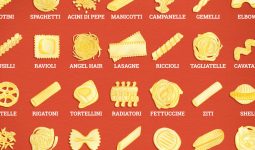Have you ever been asked, “What is modified food starch? Or have you ever heard of the term ‘modified food starch’ and felt lost?
Do you know what it is but want to expand your knowledge? Perhaps this is even the first time you have heard about it.
In this article, you will learn the concept of modified food starch. We will answer the question, “What is modified food starch?” We will discuss its production, types, and uses, among other things.
Before going into the production of modified food starch, let’s first look at the answer to the big question: what is modified food starch?
As the name implies, modified food starch is a food ingredient made from starch that has undergone a series of modifications.
The starch has been changed in some ways to possess desirable qualities and characteristics.
Starch is a carbohydrate (specifically, a polysaccharide) produced naturally by green plants.
Commercial starch is made from plant sources and used in food production.
Glucose units form it and are the storage form of carbohydrates in plants, such as corn, cassava, sweet potato, wheat, and potato.
What is Modified Food Starch?
The term “modified food starch” can be somewhat ambiguous and does not necessarily refer to a single type of ingredient.
Different methods are used to create modified food starch, and various sources are used to produce it.
According to Wikipedia, “modified starch, also called starch derivatives, is prepared by physically, enzymatically, or chemically treating native starch to change its properties.”
Modified food starch is a food ingredient produced from starch from different sources and can be used for many food productions.
To understand modified food starch, it is necessary to explain the sources of starch used to make this food ingredient and how it is produced.
Sources of Modified Food Starch
According to the National Celiac Association (NCA), modified food starch is often made from corn.
However, it can also come from other starch sources, such as:
- Potato
- Rice
- Wheat
- Tapioca
People sometimes use the terms “corn starch” and “modified food starch” interchangeably, but the two ingredients are not necessarily the same.
Modified food starch may start as corn starch, but when modified (usually to improve binding or thickening properties), it becomes modified food starch.
The term “modified” can also be confusing for consumers. For some, this may mean the product is made from genetically modified (GMO) ingredients.
Although some modified food starches can be made from genetically modified ingredients, such as corn, the word “modified” does not necessarily mean it is genetically modified.
As expected, modified food starch can be categorized based on the substance used to produce it. We will further discuss this later in this article.
Why is Starch Modified?
Aside from the question “What is modified food starch,” people also tend to wonder why starch is modified. Starch is modified for many reasons.
Some of these reasons are:
- Starch is modified to increase its stability in adverse environmental conditions.
- Starch is modified to change its texture.
- Starch is modified to cause a change in viscosity.
- Starch is modified to increase or decrease gelatinization time.
- Starch is modified to change the temperature of the gelatinization of the starch.
- Starch is modified to improve its taste.
- Starch is modified to change its retrogradation property.
- Starch is modified to change its gel clarity.
- Starch is generally modified into modified food starch to improve its ability to maintain the structure and texture of food.
- Starch is modified to increase its digestibility.
Production Method of Modified Food Starch
There are different ways to produce modified food starch, and the modification method varies depending on the starch itself and its use.
A 2016 article in the International Journal of Food Sciences and Nutrition (IJFSN) provides information on how modified food starch is created.
The ways starch can be modified include:
- Roasting it
- Addition of a positive electrical charge
- Treating it with acid
- Treatment with emulsifiers
- Treatment with potassium hydroxide.
- Treatment with sodium hydroxide.
- Starch ether treatment.
The process of starch modification depends on the starch’s source and what it is intended for.
Sometimes, the starch can undergo multiple treatments depending on the desired result.
Hence, the following are the general methods of starch modification:
- Physical modification of starch
- Chemical modification of starch
- Enzymatic modification of starch
1. Physical Modification of Starch
Physical modifications of starch do not alter its chemical properties. They are simple, inexpensive, and non-toxic.
The modified food starch retains most of the properties of the native food starch.
This method of producing modified food starch is generally divided into:
- Heat (thermal) treatment
- Non-thermal treatments include sonication, milling, high hydrostatic pressure treatments, etc.
Thermal Treatment of Starch
These treatment methods require the use of heat. They include:
- Pre-gelatinization
- Heat-moisture treatment
- Annealing heat treatment
- Microwave heating
Non-thermal Treatment of Starch
These are treatment methods that do not involve the use of heat. They are clean, environmentally friendly, and require less energy.
They include:
- Gamma irradiation
- Ultrahigh pressure treatment
- Ultrasonic treatment
- Ball-milling
- Ozone
- Cold plasma
2. Chemical Modification of Starch
This type of modification involves using chemical methods to alter the physicochemical properties of starch.
It is divided into:
- Esterification
- Etherification
- Oxidation
- Acid treatment
- Alkaline treatment
- Bleaching
Esterification of starch
- Starch is esterified at a high pH with harsh chemicals like sodium hydroxide.
- Although the esterification of starch alters the structure of its granules and widens its range of applications, it is expensive and time-consuming.
Etherification of starch
- Etherification of starch is a common chemical method of starch modification.
- It increases the stability of starch to a high pH.
Oxidation of starch
- Oxidation of starch is another popular modification method.
- Oxidation of starch decreases its viscosity and yields starch molecules with lower molecular weights.
- Oxidized starch is a better coating for meat and fish before frying.
Acid treatment of starch
- Inorganic acids like hydrochloric acid (HCl) and sulphuric acid (H2SO4) are used to modify food starch chemically.
- The inorganic acids break some of the glycosidic bonds in the starch, thereby altering some properties of the native starch.
- Acid treatment reduces the starch’s viscosity and decreases the gelatinization temperature and enthalpy of gelatinization.
Alkaline treatment of starch:
- Inorganic alkalis like sodium hydroxide or potassium hydroxide are also used to modify starch.
- It alters some of the properties of starch, such as its swelling power and susceptibility to enzymatic action.
Bleaching:
- Bleached starch is produced by treating native starch with hydrogen peroxide or other bleaching agents.
- Bleaching improves the whiteness of starch and eliminates microbes that may be present in the starch.
3. Enzymatic Modification of Starch
- Enzymes are biological catalysts. They speed up the rate of chemical reactions.
- Enzymes are used to modify starch to create desirable properties that the native starch lacks.
- Enzymes that modify starch include glucoamylase, fungal alpha-amylase, bacterial alpha-amylase, beta-amylase, glucose isomerase, pullulanase, xylanase, fungal acid protease, etc.).
- For example, baking powder contains some enzymes that modify the starch present in flour. This makes the flour easier to handle and manipulate as dough.
Types of Modified Food Starch
After we have learned to answer the question, “What is modified food starch?” we must know some types of modified food starch.
The common types are made from ingredients such as corn, wheat, potato, and tapioca.
Typically, labels will state the source from which the starch has been modified, like the “modified corn starch.”
However, unless it emanated from one of the major allergens (in this case, wheat), the law does not require it to be listed that way.
They are:
- Modified corn starch
- Modified tapioca starch
- Modified potato starch
- Modified wheat starch
- Modified waxy maize starch
- Modified rice starch, etc.
Physical Properties of Modified Food Starch
According to foodadditives.net, the physical appearance and properties of modified food starch are summarized as follows:
- Most modified starches are white or off-white.
- They are usually odorless powders.
- These powders can consist of whole granules having the appearance of native starch or aggregates consisting of several granules.
- They are insoluble in cold water if not pre-gelatinized.
- They form colloidal solutions with viscous properties in hot water.
- They are insoluble in ethanol.
Applications and Uses of Modified Food Starch
1. Modified food starch is used as a thickener:
- A thickener is added to a liquid to make it firmer while cooking.
- Modified food starch can be used instead of flour or native starch to thicken products.
- It should be noted that products thickened with modified food starch will look thinner. This is because maximum viscosity occurs after cooling.
- If the product is to be frozen, modified food starches will overcome curdling and separation issues.
2. Modified food starch is used as a stabilizer:
- Stabilizers are compounds added to food products to preserve their structure, viscosity, and stability.
- Modified food starches are now used instead of stabilizers like gelatine, alginate, pectin, cellulose, etc.
3. Modified food starch is used as a binder:
- Binders are food additives that improve food texture by thickening or binding the ingredients together.
- Modified food starch can replace binders such as eggs, wheat flour, rice, milk, and gelatine.
4. Modified food starch as an emulsifier:
- Emulsifiers are food additives that encourage the suspension of one liquid in another. An example is the suspension of oil in water.
- Modified food starch can replace emulsifiers like algin, carrageenan, agar, etc.
5. Modified food starch is added to frozen products to prevent them from dripping as they get defrosted.
6. Acid-treated modified food starch forms the shell of jelly beans.
7. Starch modified by oxidation increases the stickiness of the batter.
Therefore, it is common to find modified food starches in the following foods:
- Premade meals.
- Canned foods and soups.
- Meat products like sausage.
- Confectionery.
- Cheese sauces
- Beverage.
- Cream fillings and fruit pies.
- Low-fat ice cream
- Sauce.
- Gravies.
- Instant foods (think instant puddings, noodles).
- Powder-coated foods such as cocoa-dusted almonds
Conclusion
By now, you should have answers whenever you hear the question: What is modified food starch? You have seen why starch is modified, how it is modified, the types, and their applications.
It is important to note that most modified starches are gluten-free, except those that use wheat starch as a base. However, Modified wheat starch may contain some gluten.
Therefore, if you are gluten intolerant, you should check the products you consume. Generally speaking, all modified food starches are safe for consumption.
I hope you found this article helpful and that it adequately addressed the question of “what is modified food starch?”








